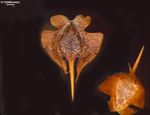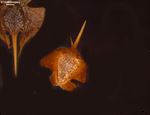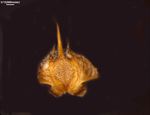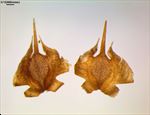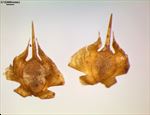Taxonomy
Soliva sessilis Ruiz & Pav., Fl. Peruv. Prodr. 113, t. 24. 1794
Common synonyms
Gymnostyles alata Spreng.; Gymnostyles barcklayana (DC.) Steud.; Gymnostyles chilensis Spreng.; Gymnostyles pterosperma Juss.; Soliva alata (Spreng.) DC.; Soliva barcklayana DC.; Soliva barclayana DC.; Soliva daucifolia Nutt.; Soliva microloma Phil.; Soliva neglecta Cabrera; Soliva pterosperma (Juss.) Less.; Soliva sessilis var. barclayana (DC.) Baker; Soliva sessilis var. sessilis; Soliva valdiviana Phil.
Common name
Onehunga weed, bindi
Description
Propagule or dispersal unit is the fruit. Fertile part (not counting the hardened style) (1.5-)2-2.5 mm long, 1-3 mm wide, in side view widest in lower part (ovoid) or widest in the middle, +/- straight or conspicuously curved, the upper (apical) end narrowing, in cross-section flattened, basal scar (carpopodium) inconspicuous and undifferentiated, central, beak (=thinner sterile stalk between seed and pappus) absent, wings present, 1-2 mm wide, fruit surface light brown or straw or dark brown, smooth (except at cellular level), with simple straight hairs, thickened margin absent, longitudinal ribs absent.
Pappus absent, but the style hardened into a straight, smooth spine up to 1.5-2.6 mm long, and the wings generally ending in one smaller apical spine each.
Ecology
Small annual herb, seeds with style transformed into a spine and adapted to embedding itself into the feet of animals to be dispersed. Temperate to subtropical regions. Weed of various disturbed areas but in particular of lawns and parklands.
Native range
(Southern?) South America.
Introduced range
California and southern United States, Mexico, southwestern Europe, South Africa, Japan, Taiwan, Australia, New Zealand.
